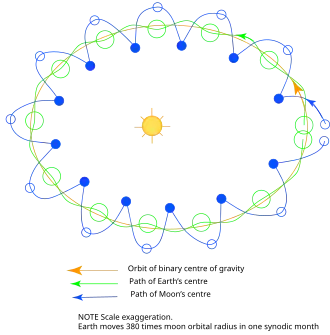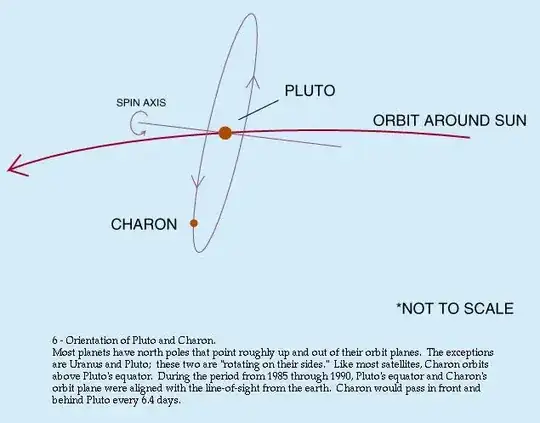Pluto and Charon orbit around their common center of mass. And their common center of mass orbits around the sun, following an elliptical trajectory.
Analogously, the Earth and the Moon orbit around their common center of mass, and their common center of mass orbits around the sun.
All of this is well described by Newtonian gravitation.
The only remarkable thing in the Pluto-Charon system is that their masses are comparable, such that the motion of Pluto around the common center of mass is quite visible.
Edit:
Since the common center of mass follows an elliptical trajectory around the sun, and the planet Pluto orbits around the common center of mass, the trajectory of the planet around the sun is not elliptical, but it is given by the combination of the two motion, i.e., revolution of the common center of mass around the sun, and revolution of the center of mass of Pluto around the common center of mass.
The shape of this trajectory is qualitatively similar to the trajectory of the Moon in the reference frame of the sun, which is shown in the picture below. 
Both the planet and the moon follow a "wobbled" trajectory, given by the combination of the elliptical motion of the common center of mass, and by the orbital motion of the planet and the moon around the common center of mass.
Please note that if the mass of the planet $M$ is much larger than the mass of its moon $m$, the common center of mass is inside the planet (as is the case with the Earth-Moon system), and the "wobbling" of the planet trajectory is very small compared with the "wobbling" of its moon.
If the two masses are comparable, as is the case in the Pluto-Charon system, the common center of mass is outside the planet and the "wobbling" of the two trajectories are comparable.
Note that the common center of mass of the Pluto-Charon system is indeed outside Pluto, as you can see from the first picture in the question, which was taken in the reference frame of the common center of mass. Note also that Pluto and Charon have a rotational motion (spin) around their own rotational axis.
Further Edit: I just found a short review of the relative motion of planets and moons can be found in the Wikipedia article Barycenter. The figures in particular are very clear and self-explanatory.



